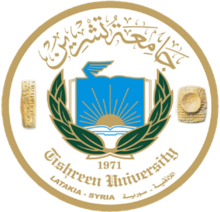Extended HI structures around galaxies are of prime importance to probe galaxy formation scenarios. The giant HI ring in the Leo group is one of the largest and most intriguing HI structures in the nearby Universe. Whether it consists of primordial g
as, as suggested by the apparent absence of any optical counterpart and the absence of an obvious physical connection to nearby galaxies, or of gas expelled from a galaxy in a collision is actively debated. We present deep wide field-of-view optical images of the ring region obtained with MegaCam on the CFHT. They reveal optical counterparts to several HI and UV condensations along the ring, in the g, r, and i bands, which likely correspond to stellar associations formed within the gaseous ring. Analyzing the spectral energy distribution of one of these star-forming regions, we found it to be typical for a star-forming region in pre-enriched tidal debris. We then use simulations to test the hypothesis that the Leo ring results from a head-on collision between Leo group members NGC 3384 and M96. According to our model which is able to explain, at least qualitatively, the main observational properties of the system, the Leo ring is consistent with being a collisional ring. It is thus likely another example of extended intergalactic gas made-up of pre-enriched collisional debris.


